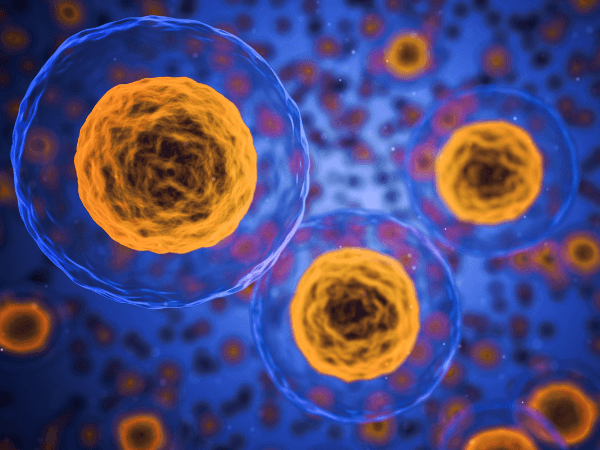It’s nice to think that we can simply put our trust in the medical field blindly when it comes to treatment for personal health problems, but the reality is that there are a lot of things that are still being developed and understood about the human body. One of the mysterious functions still being researched is allergies. While scientists have developed technology to treat and even diagnose allergies once reactions and symptoms develop, there are still a lot of question marks when it comes to understanding where allergies actually come from. There has been a recent study that it could actually be within our cells.
What are allergies?
In order to make use of this knowledge, it’s important to go all the way back to the beginning and understand what allergies are at their cores. When it comes to a food allergy specifically, you can be looking at one of two categories, specialists say. Some are mediated by IgE which are the fast and severe ones (think difficulty breathing and anaphylaxis) whereas others are non-IgE mediated, (which tend to be rashes, stomach upset or congestion) [1].
While IgE mediated allergies certainly appear to be more pressing than non-IgE reactions, both are being studied in order to help specialists learn how to predict allergies before we get to the point of them disrupting daily lives and causing potentially life-threatening reactions.
As far as allergic reactions themselves, these are the body’s responses to something that it determines to be dangerous that has entered the body through the mouth or through an airway. This threat must be destroyed as soon as possible for your body’s safety, so it creates a response of inflammation in the body to fight it off. This could be either in restricted airways or a rash, depending on the mediation in the antibodies themselves.
How cells can help crack the allergy code
As scientists study allergies more and learn about the development of an allergy throughout infancy, childhood or even adulthood, it’s clear that there is a link between genetic factors and generational allergies. In fact, specialists believe that genetics play a big role within both predicting and tracking allergies in parents and children [2]. If a child has two parents with food allergies, it’s more than likely that they will have a food allergy too at some point in their life, though it may not be to the same trigger and its severity may be different.
However, having one or two biological parents with allergies does not necessarily guarantee that a child will have an allergy as well; it just means that they’re more susceptible to developing an allergy. But why? Scientists are busy trying to find out and are getting closer each year.
There’s still a lot that has to be learned about allergies, but specialists are finding success in inter-cellular communication. By learning to “speak the language”, if you will, that cells do, you will be able to get a solid read on the body’s strengths and weaknesses — such as allergies — as well as understand what kind of allergic reaction your body could potentially have in exposed.
In a recent study, MiR-1 — a small RNA that is responsible for gene expression within the cell — was found to have significant success in helping reduce airway inflammation in allergy sufferers [3]. This suggests that manipulating MiR-1 could be helpful in preventing wheezing and other breathing-related allergic reactions that make food allergies so particularly dangerous in sufferers. With more research, understanding it works within RNA (and how science can manipulate it) may even offer a potential long-term cure for severe breathing-related allergic reactions. However, that is still a long way off.
Another interesting component with taking a look at MiRNA such as MiR-1 is that there could be potential for “cracking the code” to their communication so that we can understand how cells communicate with each other. Currently, scientists understand that when MiRNA are mediated by EV (particles that are released from a cell), cells communicate back and forth to each other. Since MiR-1 is thought to help with inflammation, scientists can predict that — with time — MiRNA might even become biomarkers, according to research [4]. This will be supportive in diagnosing and understanding allergies on a personalised basis.
While there is still a lot that needs to be understood about allergies and their role with cells, it’s clear that communication between cells could very well offer the beginning of an answer. All that’s left is for scientists to crack the code and use that information to help guide us towards support in predicting, diagnosing, and even treating allergies.
In the meantime, if you need an allergy test done, consider checking out our kits. While it doesn’t promise communication between cells, it can offer you the information that you need to diagnose allergies and learn how to avoid them.
References
[1] Sampson, H.A. and Metcalfe, D.D., 1992. Food allergies. Jama, 268(20), pp.2840-2844. Available at: https://jamanetwork.com/journals/jama/article-abstract/401427
[2] Blumenthal, M.N., 2000. Genetics of asthma and allergy. In Allergy and asthma proceedings (Vol. 21, No. 1, p. 55). OceanSide Publications. Available at: https://www.ncbi.nlm.nih.gov/pmc/articles/PMC3151648/
[3] Korde, A., Ahangari, F., Haslip, M., Zhang, X., Liu, Q., Cohn, L., Gomez, J.L., Chupp, G., Pober, J.S., Gonzalez, A. and Takyar, S.S., 2020. An endothelial microRNA-1–regulated network controls eosinophil trafficking in asthma and chronic rhinosinusitis. Journal of Allergy and Clinical Immunology, 145(2), pp.550-562. Available at: https://www.ncbi.nlm.nih.gov/pubmed/32035607
[4] Fujita, Y., Yoshioka, Y., Ito, S., Araya, J., Kuwano, K. and Ochiya, T., 2014. Intercellular communication by extracellular vesicles and their microRNAs in asthma. Clinical Therapeutics, 36(6), pp.873-881. Available at: https://www.clinicaltherapeutics.com/article/S0149-2918(14)00263-X/pdf



